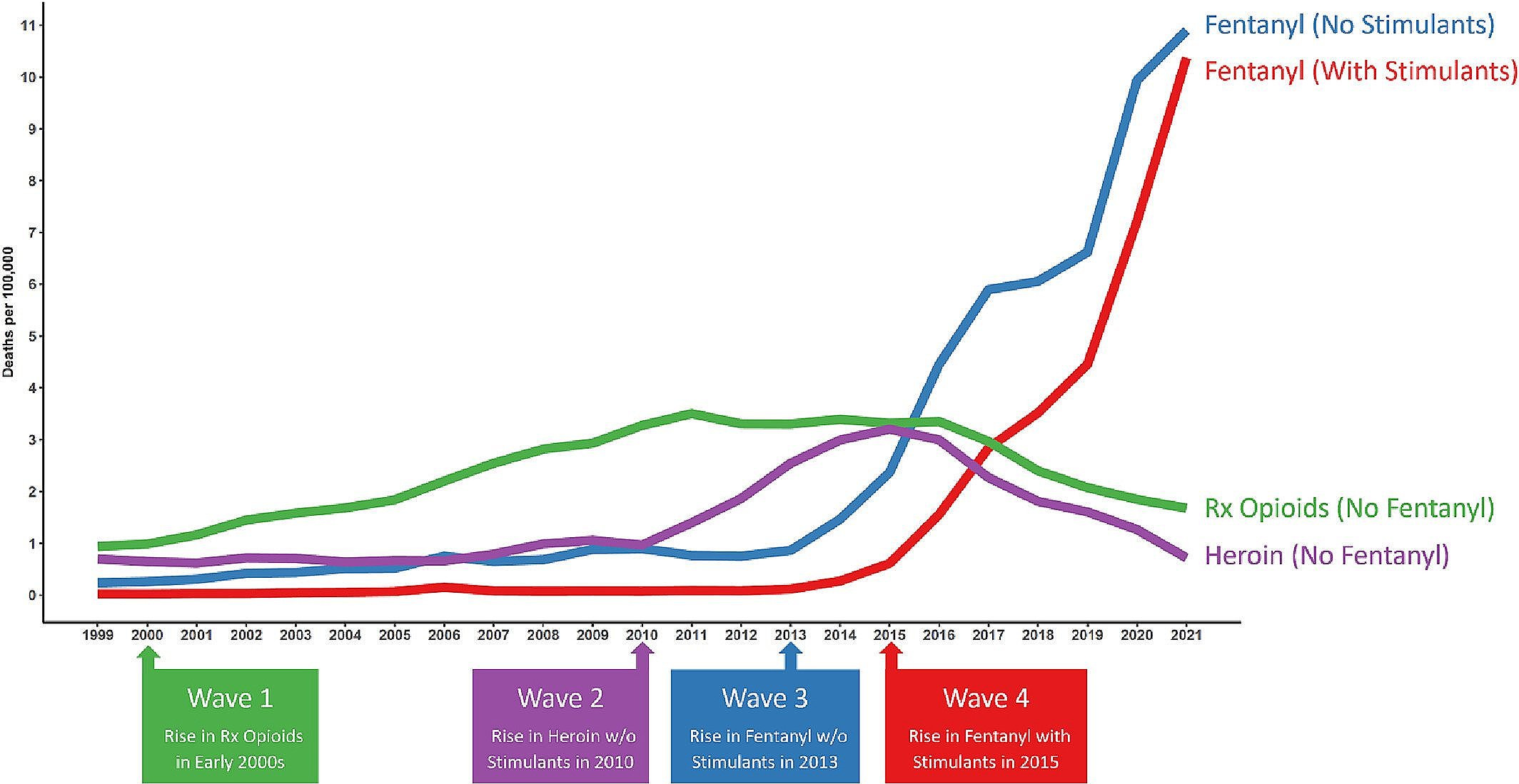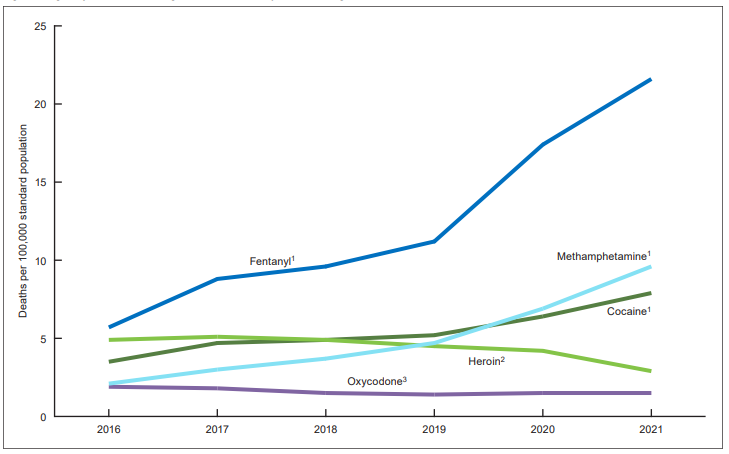Prescription Opioids Play Only Minor Role in Overdose Crisis
/By Pat Anson, PNN Editor
The role of prescription opioids in the nation’s overdose crisis continues to shrink.
In a new study from the drug testing firm Millennium Health, researchers say multiple substances were found last year in nearly 93% of urine samples in which fentanyl was detected. That is not altogether surprising, as “polysubstance” use increased as fentanyl came to dominate the illicit drug supply, appearing in more and more street drugs such as heroin, cocaine and methamphetamine.
What is surprising is the minimal role that prescription opioids now play. In 2013, opioid pain medication was the most common substance found in fentanyl-positive drug tests in the United States, appearing in over 70% of urine samples. A decade later, prescription opioids were detected in less than one in ten samples — ranking far behind methamphetamine, cannabis, cocaine and heroin.
In fact, you are about twice as likely to find two other medications -- benzodiazepines (15.8%) and gabapentin (13.3%) -- than you are prescription opioids (7.6%) in urine samples testing positive for fentanyl.
Substances Detected in Fentanyl-Positive Drug Tests (2023)
MILLEnNIUM HEALTH
Millennium based its findings on over 4.1 million urine drug tests (UDTs) collected from 2013 to 2023 and analyzed through mass spectrometry. Because many of those samples came from people being treated for a substance use disorder, they offer a clear insight into drug trends that are driving the overdose crisis.
Now in its “fourth wave,” Millennium says a tidal shift has occurred in the so-called opioid epidemic, with illicit drug users far more likely to use non-opioid substances like stimulants than prescription opioids.
“National, regional, and state-level UDT data all suggest that people who use fentanyl are now, intentionally or unintentionally, much more likely to also use methamphetamine and cocaine,” the report found. “The results of our analyses also reveal shifting patterns of opioid use among those who use fentanyl. More specifically, they showed progressive declines in prescription opioid use from 2015 to 2023.”
The declining role of prescription opioids can be traced back to the 2016 CDC opioid guideline and a multiyear campaign by the DEA to slash opioid production quotas, which has reduced the supply of oxycodone and hydrocodone by about two-thirds. There is little evidence either of those federal efforts reduced the number of overdoses. The CDC estimates there were over 111,000 drug deaths in the 12-month period ending in September 2023 — nearly double the number of fatal overdoses in 2016.
The growing use of stimulants such as methamphetamine makes it difficult for public health campaigns to address the problem. Unlike opioids, there are no FDA-approved medications for stimulant use disorder, leaving behavioral therapies and abstinence as the only “evidence-based” treatments for people with a stimulant problem.
“Stimulants are a serious national challenge emphasizing the need for continued progress on the national plan to address methamphetamine supply, use, and consequences,” Millennium said.


















